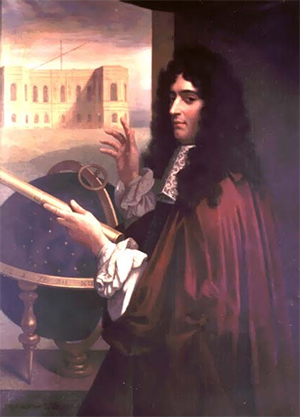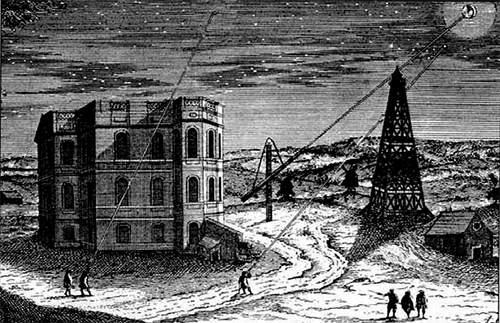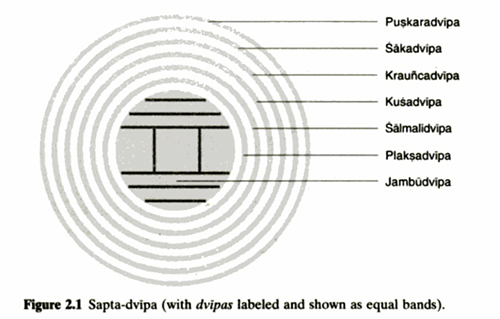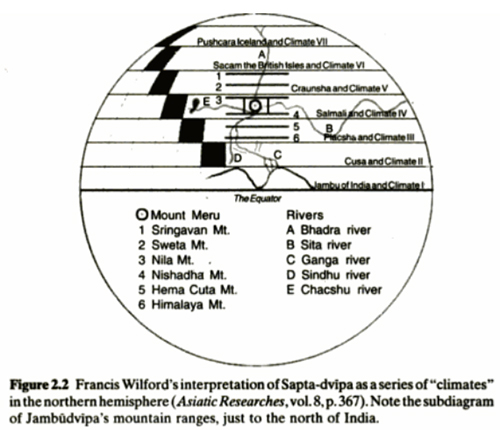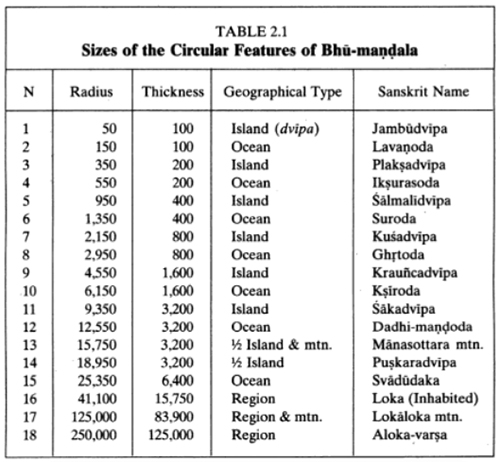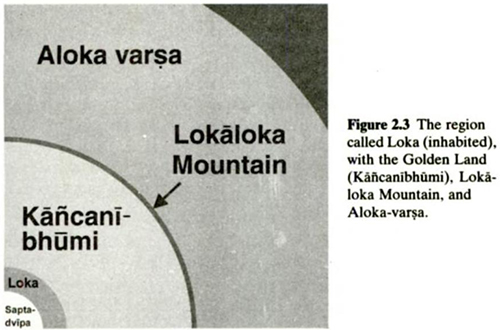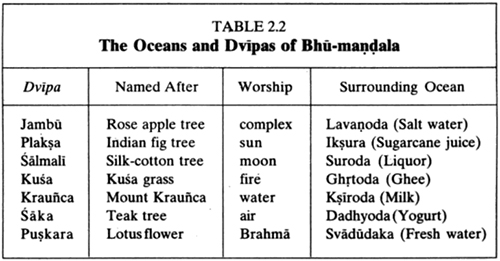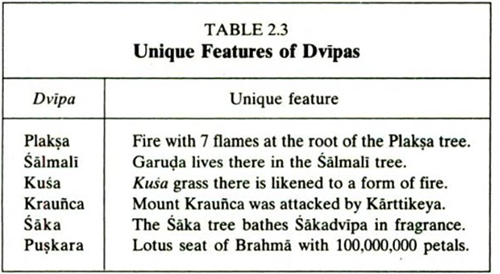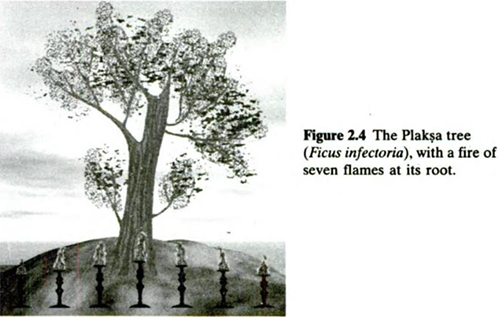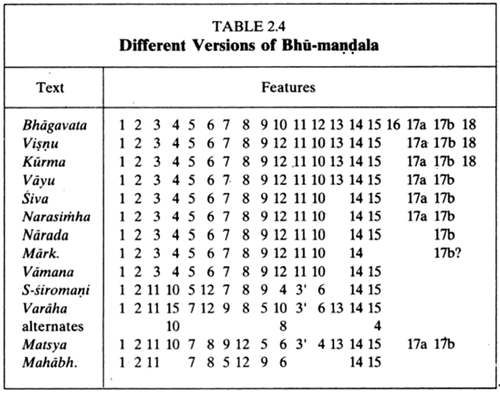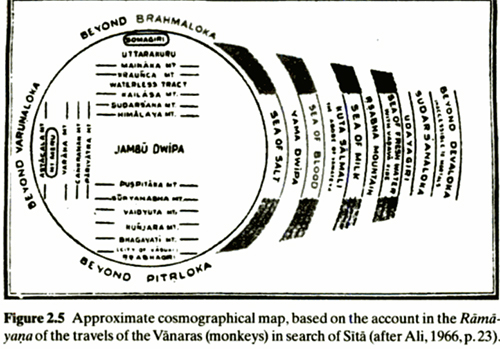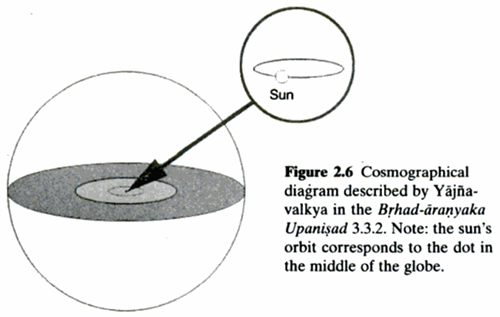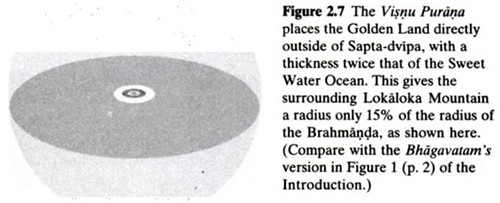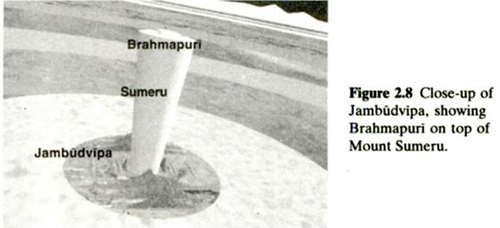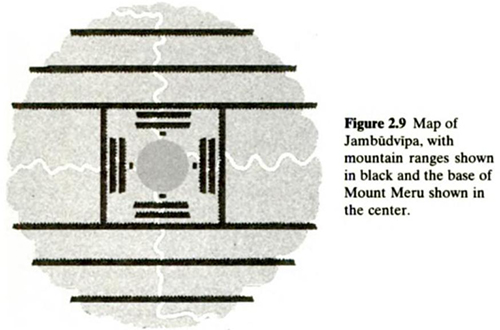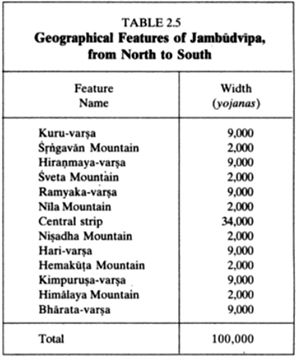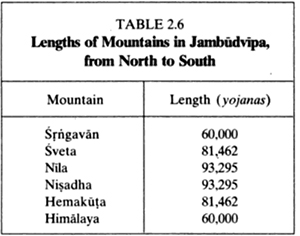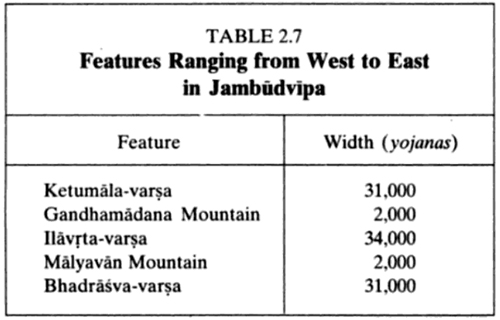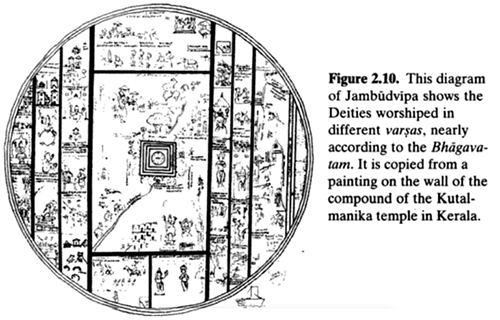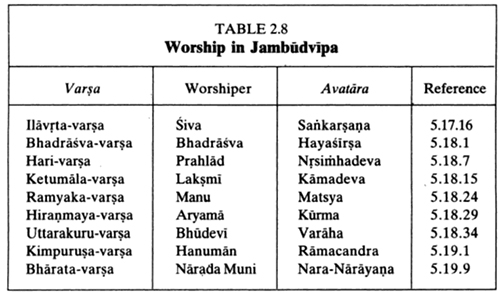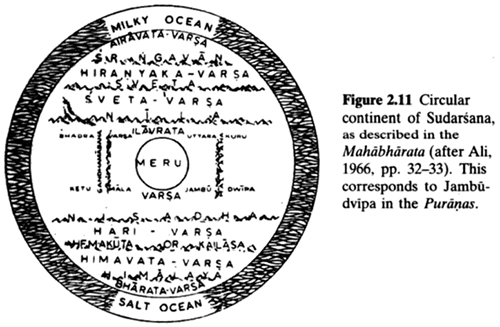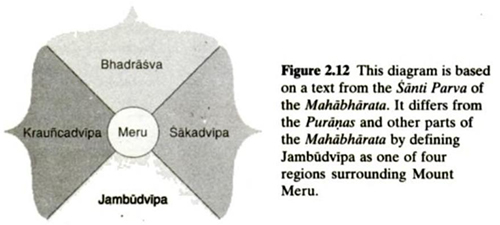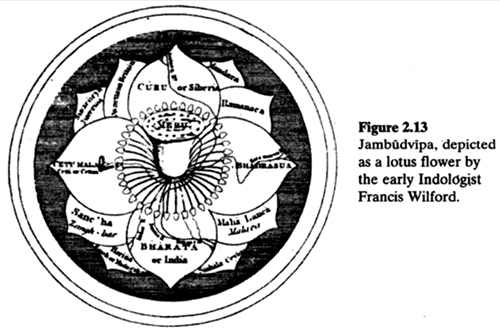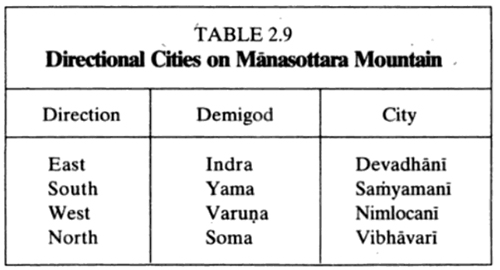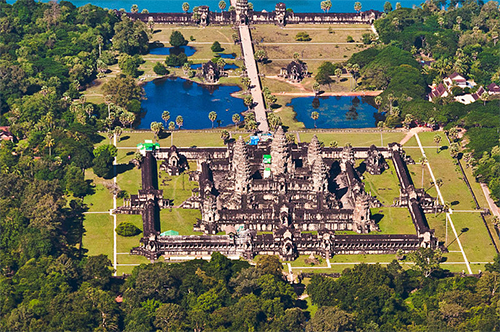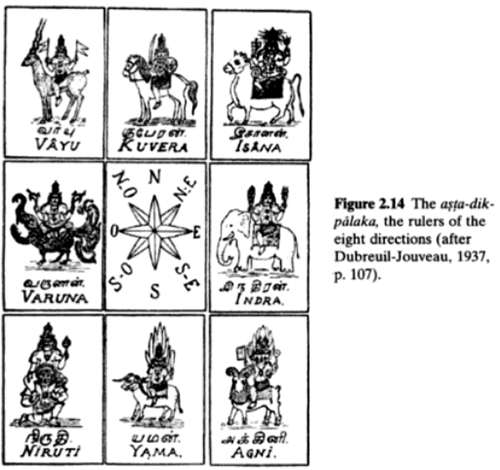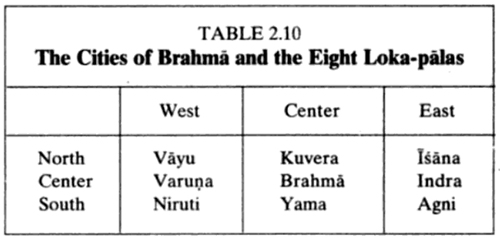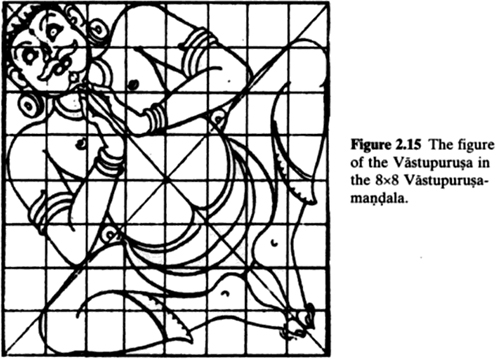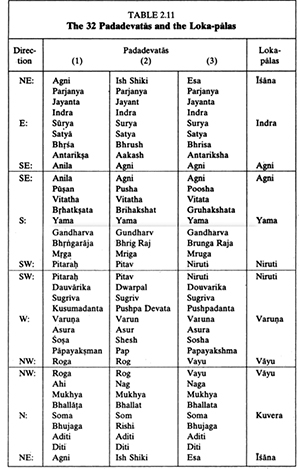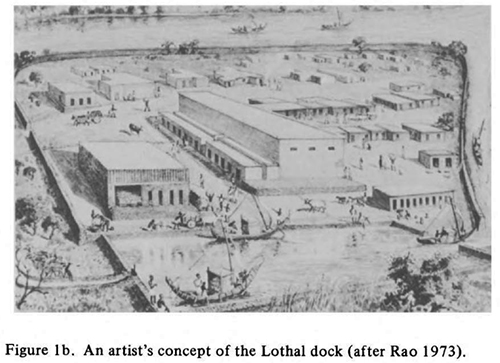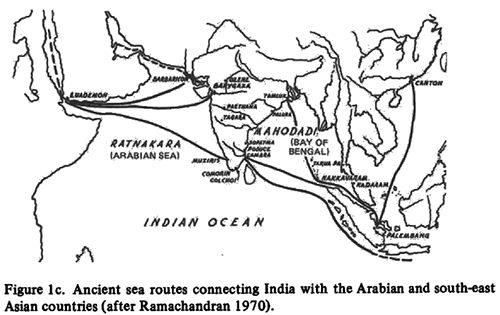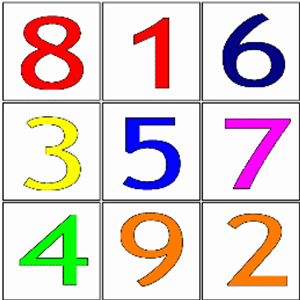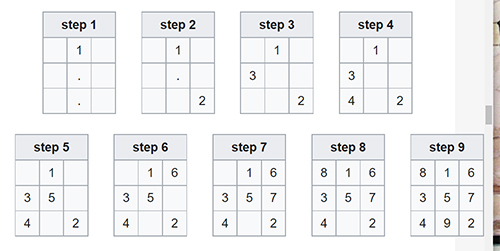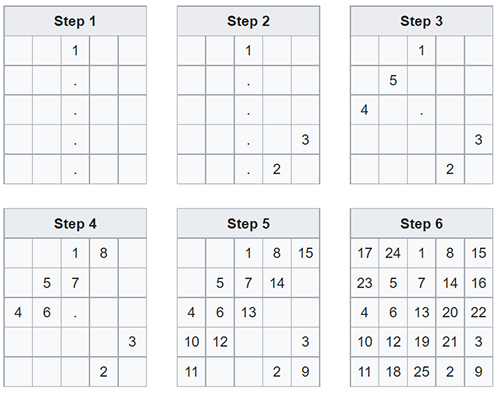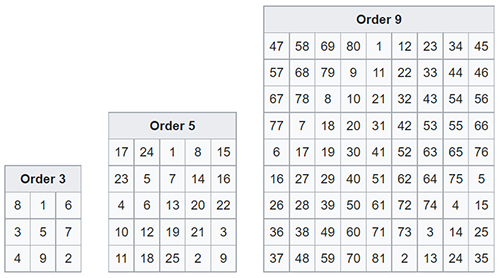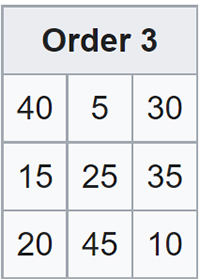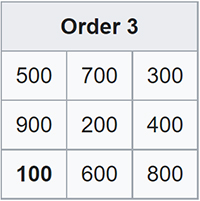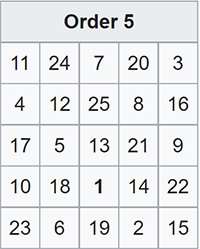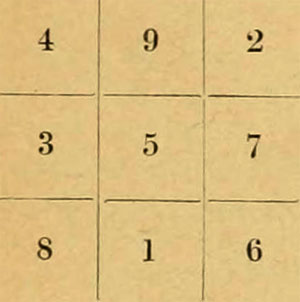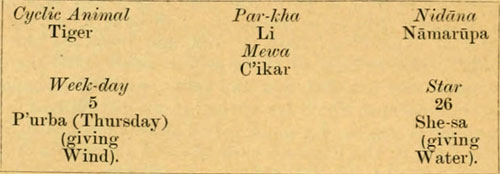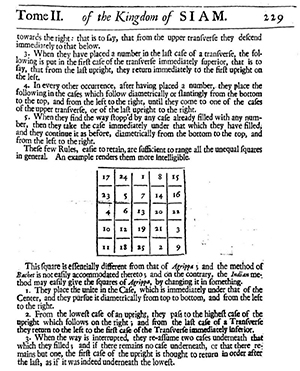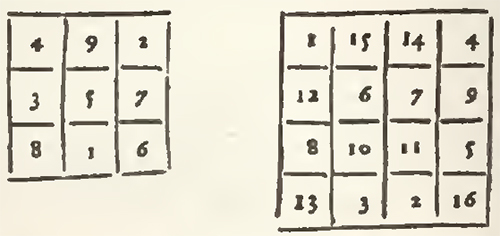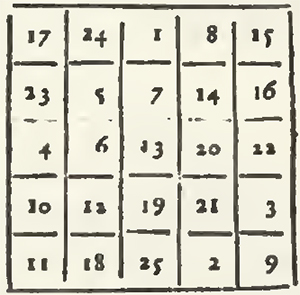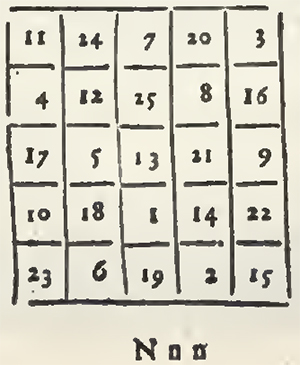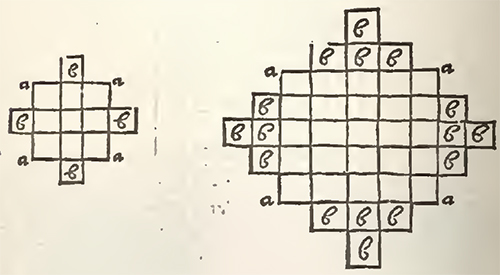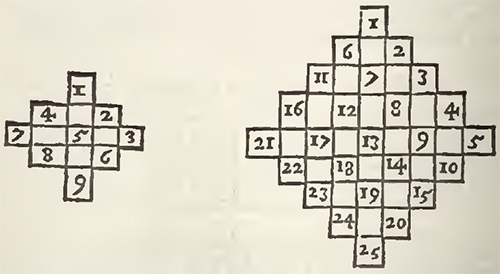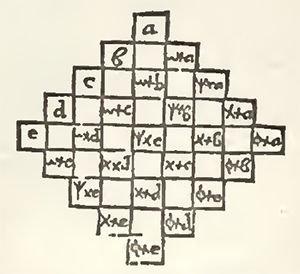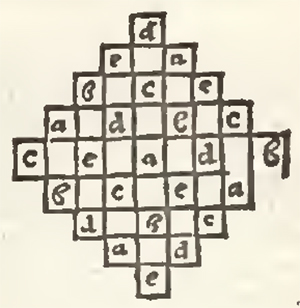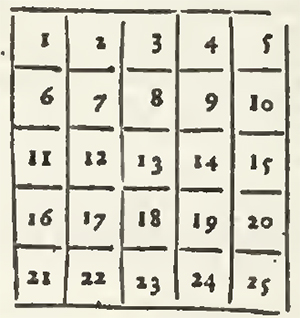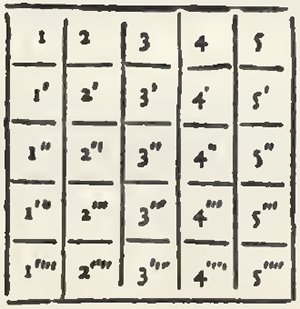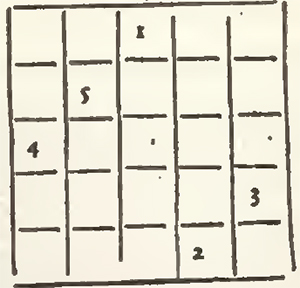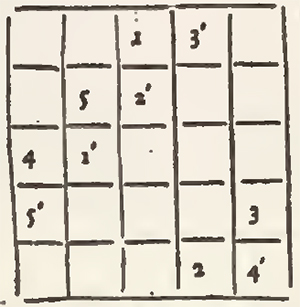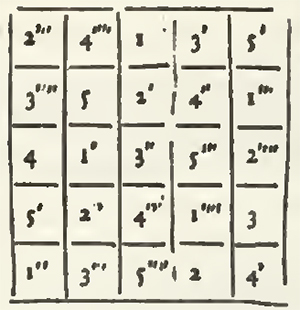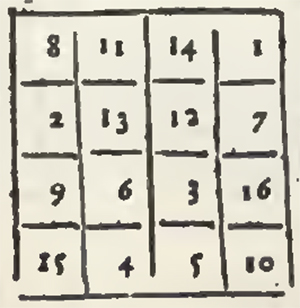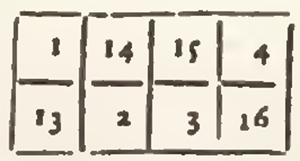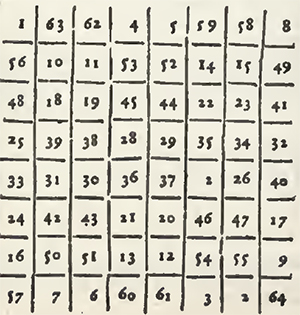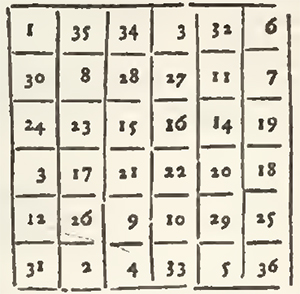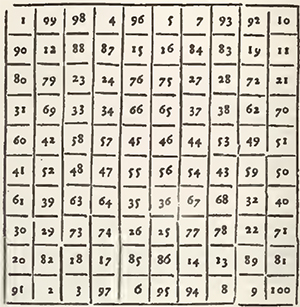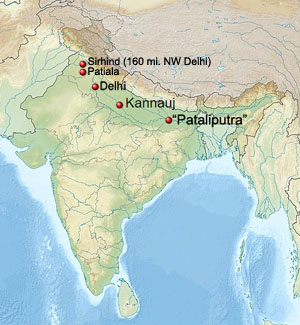Lettres Edifiantes [Lettres, 1781, 15:337-349]
EXPEDITION OF PERES PONS AND BOUDIER TO JAIPUR
Pere Pons arrived in India in 1726 and after spending a few years in Thanjavur was appointed superior of the French Mission in Bengal. Other than compiling a Sanskrit grammar, and a treatise on Sanskrit poetics that was sent to Europe, he visited Delhi and Jaipur with Pere Boudier, mentioned earlier, to make some astronomical observations [Bamboat 1933: 95]. We find an account of this in a note entitled 'Observations: Geographic Expedition Undertaken in 1734 by Jesuit Fathers During Their Voyage from Chandernagor to Delhi to Jaipur' in the Lettres Edifiantes [Lettres, 1810, 15:269-91]. [Lettres, 1781, 15:337-349] In fact, this is a report on the very observations mentioned earlier in our discussion on Gaubil. The report begins by pointing out that the raja of Amber, Sawai Jai Singh, a savant [learned person] in astronomy, for whom the Jesuits had undertaken this expedition, had a number of astronomers working for him [Lettres 1810. 15: 269]. Jai Singh had requested the superior general of the church at Chandernagore, Boudier, to send Jesuit fathers stationed at Chandernagore to make some observations; and so Peres Pons and Boudier set out for Delhi and Jaipur.
The motivations behind this expedition have been recorded by Eric Forbes [Forbes 1982].10 Jai Singh's first contact with European astronomy appeared to reinforce his conviction that his large masonry observatories yielded more accurate results than iron astrolabes and sextants. He failed initially to appreciate the point that the source of his error was a faulty theoretical basis for computing lunar and planetary motions adopted by La Hire. In his letter to Pere Boudier, Jai Singh informed the former that he recognised this failing on mastering La Hire's book, and then wished to investigate whether other tables existed, and if so its underlying theoretical principles [Forbes 1982: 238]. And while Boudier was a "skilled telescopic observer", he was not equipped to answer Jai Singh's queries [Forbes 1982: 238]. Peres Boudier and Pons agreed to undertake the 1,000 mile journey to Jaipur on January 6, 1734 in the hope that they could establish a Christian mission at Jaipur. They reached Jaipur nine months later, but were forced to return shortly on account of ill health. When they were not making their observations, Forbes writes, they spent their time trying to convince the local brahmins of "Indian astronomy's indebtedness to ancient Greek culture" [Forbes 1982: 240].
The document in the Lettres reports their observations of latitudes and longitudes of about 60 Indian towns and cities, the course of rivers they encountered during the course of their journey, the occultation of the Jovian satellites, and finally their observation regarding two eclipses that occurred in 1734. Appendix I provides a list of the latitudes and longitudes of some of the cities and towns obtained by them. However, there is an error of 35" in his latitude measurements of the observatory sites at Jaipur and Delhi [Sharma 1982: 347].
Throughout the 18th century one of the crucial obstacles for reconstructing the geography of India was the paucity of data on geographical latitudes and longitudes. The condition was further exacerbated by the non-standardisation of the Indian mile vis-a-vis the European mile, given the fact that the Indian mile varied from region to region of the country [Sen 1982: 1]. The Jesuits set about mapping this terrain. The method employed for determining these parameters required that the latitude and longitude of Chandernagor be known through a large number of astronomical observations. The route followed was carefully mapped as they travelled from one station to a neighbouring one. All along, the time was scrupulously noted with a time piece on hand, that was calibrated for the Paris meridian. The time spent was then compared with the speed of the vehicle. In addition, the detours along the route were carefully marked, and the speed of the air noted, a compass provided the directional readings [Lettres 1810, 15: 273]. This procedure was repeated all the way from Chandernagor to Kassimbazar to Patna to Agra to Delhi till they reached Jaipur. From Patna to Agra they could not use the compass since they were travelling by cart. Their observations had thus to be supplemented by surveying the course of the sun. Furthermore, throughout the voyage, as is done on sea, they had to correct their estimates by obtaining the latitudes of several locations [Lettres 1810. 15: 274]. No observations were made between Chandernagor and Kassimbazar since they covered this distance by the waterway, and the meandering path of the Ganges would have required that they spend a great deal of time to obtain a just estimate. In addition, they spent some time covering the distance at night [Lettres 1810, 15: 274.] On examining a number of naval maps, they found that Calcutta was marked more towards the east than Chandernagor, while in fact it was more to the west. Boudier and Pons found it surprising that the pilots sailing on the Ganges from one town to the next had not corrected this error. In addition, the report contains observations of the meridional heights of stars in 1734 taken from several towns [Lettres 1810, 15: 280-83].
At Kassimbazar, the French Jesuits carried out observations to calculate longitudes in 1734. These observations related to the immersion of the first satellite of Jupiter on January 30 at 15 hours, 41. On the same day, the passage of Beta Polaris was noted at 14 hours, 2 minutes and a fraction of a second [Lettres 1810, 15: 284-85]. At that moment a second star passed the vertical of the North Star at 16 hours 21 minutes and 30 seconds. From the passage of these two stars across the vertical of the North Star the time of the immersion of the satellite was obtained. During this period the time elapsed was 2 minutes and 50 seconds, and the hour of immersion was corrected to 15 hours 38 minutes and 30 seconds. At Fatehpour, the immersion of the first satellite on April 2 commenced at 13 hours 45 minutes and a fraction of a second. On the same day, the height of the tail of Leo towards the west was 46 degrees 9 minutes at 13 hours 50 minutes and a fraction of a second, and the height of the brightest star in Aquila towards the east, was 19 degrees 1 minute 30 seconds at 13 hours 57 minutes and about 10 seconds [Lettres 1810. 15: 285]. From the height of the two stars it was concluded that the time elapsed was 1 minute 26 seconds, the corrected hour of immersion was 13 hours 43 minutes and 34 seconds. Based on Pere Gaubil's observation of the time of immersion in Beijing on the April 11, 1734 [Lettres 1810. 15: 285], the difference between the meridian at Paris and Fatehpur was calculated at 5 hours and 13 minutes. This could be calculated differently. At a known time, the interval between the immersion on April 2 and 11, was 8 degrees 20 hours and 25 minutes, that could be subtracted from the time of observation at Beijing. On April 2, 16 hours 6 minutes and 57 seconds was the time of immersion at Beijing. But at Fatehpur it was observed at 13 hours 43 minutes 34 seconds. This gives a difference of 2 hours 23 minutes and 23 seconds, that must be subtracted from the longitude of Beijing, which was 7 hours 36 minutes: The difference between the meridians at Paris and Fatehpur was 5 hours 12 minutes 37 seconds or 5 hours 13 minutes [Lettres 1810, 15: 286]. A similar exercise was carried out in the case of Agra [Lettres 1810 15: 287]. Gaubil responded to the longitude measurements based on the observations of the occultation of the Jovian satellites, pointing out the errors in Boudier's calculations and that Boudier was unaware of stellar aberration [Gaubil, cited in Sharma. 1982: 347]. However, in the case of Delhi a solar eclipse that occurred on May 3, 1734 was used to obtain the longitude. The eclipse commenced at 3 hours 57 minutes and 11 seconds, but it was difficult to decide the end of the eclipse since the sky was cloudy. The corrected time for the eclipse was 3 hours 59 minutes and 59 seconds and finished at 5 hours 58 minutes and 3 seconds [Lettres 1810. 15: 268]. In a letter Pere Gaubil had mentioned that the Swedish astronomer Celsius had observed the end of this eclipse at Rome at 11 hours 52 minutes and 1 second. Using the method developed by La Hire, the eclipse commenced at Delhi, when the time in Rome was 11 hours 40 minutes and 5 seconds in the morning, and finished at 1 hour 39 minutes 40 seconds in the afternoon. This gives the difference between the meridians at Rome and Delhi as 4 hours 19 minutes and 4 seconds for the commencement of the eclipse and 4 hours 18 minutes and 18 seconds for the end of the eclipse. These differ by 46 seconds, half of which is 23 seconds. Adding this to the smaller of the two figures, we get the mean difference of 4 hours 18 minutes and 41 seconds, to which we add the difference between the meridians of Rome and Paris, which is 41 minutes and 20 seconds. Thus the difference between the meridians of Paris and Delhi is 5 hours and 1 second [Lettres 181-0, 15: 288].
On December 1, 1732 there was a total immersion of the moon at 22 'gharis' (the Indian unit ghari = 24 minutes, and each ghari = 60 'palas' ) 7 'pols' after sun set was observed at Jaipur. The emersion commenced at 26 gharis 13 pols and a half after sun set. Thus the middle of the eclipse was at 9 hours 41 minutes 24 seconds after the sun set. In their calculation the brahmins had not taken account of the effects of refraction, and the fact that the sun set at 5 hours 12 minutes 48 seconds, consequently the middle of the eclipse was at 14 hours 54 minutes 12 seconds [Lettres 1810. 15: 289]. According to Cassini's observation at the Paris Observatory, the middle of the eclipse was 9 hours 58 minutes 38 seconds. Hence, the difference between the meridians of Paris and Jaipur was 4 hours 55 minutes 34 seconds [Lettres 1810. 15: 290]. While Gaubil had made his observations of the satellite of Jupiter using a 20-foot focal length telescope, the Jesuits during their expedition used one that was a refracting telescope of focal length 17-feet [Lettres 1810. 15: 290].
Perusing these records, we recognise firstly the importance and authority of Gaubil among the Jesuit astronomers in India, for he appeared to be providing them the numbers that they considered standard, and thus aided their calibration. It was Gaubil who forwarded their results to Cassini, and thus the latter was the final authority certifying the results of the expedition. Secondly, the study of the motion of the stars and the planets, enabled the savants, through the Jesuits to map the co-ordinates of the globe, symbolically weaving Paris, Rome, Delhi, Jaipur and Beijing into the new fabric of modern science of which the Jesuits were the prominent cultural vectors, and subsequently the agents of cultural imperialism.
-- French Jesuit Scientists in India: Historical Astronomy in the Discourse on India, 1670-1770, by Dhruv Raina
The Bracmanes cultivated almost every part of mathematics; algebra was not unknown to them: but astronomy, the end of which was astrology, was always the principal object of their mathematical studies, because the superstition of the great and the people made it more useful to them. They have several methods of astronomy. A Greek scholar, who, like Pythagoras, once traveled in India, having learned the sciences of the Bracmanas, taught them in his turn his method of astronomy; and in order that his disciples might make it a mystery to others, he left them in his work the Greek names of the planets, the signs of the zodiac, and several terms[???] like hora (twenty-fourth part of a day), Kendra (center), etc. I had this acquaintance at Dely, and it served me to make the astronomers of Raja Jaesing, who are in large numbers in the famous observatory which he had built in this capital, feel that formerly masters had come to them [from] Europe.[!!!]
When we arrived at Jaëpur, the prince, to convince himself of the truth of what I had advanced[???], wanted to know the etymology of these Greek words, which I gave him. I also learned from the Bracmanas of Hindustan, that the most esteemed of their authors had placed the sun at the center of the movements of Mercury and Venus. Raja Jaësing will be regarded in the centuries to come as the restorer of Indian astronomy. The tables of M. de la Hire, under the name of this Prince,[!!!] will be current everywhere in a few years.[!!!]
-- Letter From Father Pons, Missionary of the Company of Jesus, to Father Du Halde, of the same Company. At Careical, on the coast of Tanjaour; in the East Indies, November 23, 1740. From "Lettres Edifiantes Et Curieuses, Ecrites Des Missions Etrangeres", by Charles Le Gobien
Le Raja d'Amber, Jassing Savae, dont les Gazettes d'Europe firent mention en 1728 ou 1729, au sujet d'un voyage en Portugal que le Reverend Pere Figueredo, Jesuite Portugais, fit par ses ordres, mourut en 1743. C'etoit un Prince riche, puissant & scavant dans l'Astronomie, pour laquelle il avoit fait des depenses immenses. Il entretenoit plusieurs Astronomes, qui observoient jour & nuit sans discontinuer, dans differens observatoires, batis magnifiquement a sex frais, sur-tout a Dely, dans un grand fauxbourg dependant de lui, appelle pour cette raison Jassing-Poura; & a Jaepour, ville considerable & grande au moins comme Orleans, qu'il a fait batir a un peu plus d'une lieue d'Amber, & ou il faisoit son sejour ordinaire. Toutes les rues de cette ville sont larges & tirees au cordeau, & elle est, dit-on, en petit ce que Dely est en grand.
Ce Prince ayant demande des Peres Jesuites de Chandernagor; l'esperance de le rendre encore plus favorable aux Chretiens, en faveur de qui il avoit deja commence une eglise dans sa nouvelle ville, determina leur superieur general dans les Indes a lui en envoyer deux, qui partirent de Chandernagor le 6 Janvier de l'annee 1734, & qui firent les observations geographiques qu'on va rapporter. C'est tout ce que leur a permis de faire en ce genre l'incommodite des voyages en ce pays-ci, sur-tout lorsqu'il faut les faire par terre, & leur mauvaise sante, tous les deux avant leur retour ayant pense mourir de maladie, causee par les fatigues & les mauvaises eaux qu'on est oblige de boire en chemin.
Table de la latitude des Lieux suivans, & de leur longitude, par rapport a l'Observatoire Royal de Paris.
Noms Des Lieux. / long. / est. / latit. / nord.
x Jaepour, a l'observatoire, dans l'enceinte du Palais du Raja / 73m / 50s / 26 m / 56 s
= Naella / 73m / 57s / 26m / 56s
= Parasaoli / 74 / 13 / 26 / 59
oo Onn'apasscule nom / 74 / 30 / 27 / 1
oo de ces deux endroits / 74 / 42 / 27 / 10
Balodar / 75 / 3 / 27 / 20
Dig / 75 / 22 / 27 / 25
x Matoura / 75 / 49 / 27 / 30
Gaugat / 76 / 1 / 27 / 13
xx Agra / 76 / 9 / 27 / 10
______________________
xx Dely, a l'observatoire du Raja / 75m / 0s / 28m / 37s
Au Palais de l'Empereur Mogol / 75 / 2 / 28 / 41
Faridabad / 75 / 8 / 28 / 27
Parval / 75 / 14 / 28 / 10
Ourel / 75 / 22 / 27 / 56
Chatequi-Sarai / 75 / 37 / 27 / 44
Matoura, Gaugat, Agra comme di-dessus.
Ferosabad / 76 / 27 / 27 / 7
Sacourabad / 76 / 39 / 27 / 4
Jassondnagar / 76 / 49 / 26 / 52
x Etaya / 76 / 57 / 26 / 45
Agitmal / 77 / 14 / 26 / 32
Sicandara / 77 / 28 / 26 / 23
= Drouguedas / 77 / 46 / 26 / 17
x Corregianabad / 78 / 2 / 26 / 9
Cajoua / 78 / 15 / 26 / 5
Fatepour / 78m / 30s / 25m / 56s
Chobe. On prononce cho comme dans le mot chose / 78 / 48 / 25 / 46
Chassadpour / 79 / 3 / 25 / 40
Alemchand / 79 / 17 / 25 / 34
xx Helabas / 79 / 35 / 25 / 26
= Saidabad / 79 / 52 / 25 / 25
= Jagdis / 80 / 8 / 25 / 23
Babouki-Sarai / 80 / 25 / 25 / 23
xx Benarez / 80 / 47 / 25 / 21
Sedraja / 81 / 4 / 25 / 17
= Mounia / 81 / 21 / 25 / 14
Jehanabad / 81 / 40 / 25 / 10
x Sasseram / 81 / 58 / 25 / 5
= Gothaoli / 82 / 13 / 25 / 0
Samsernagar / 82 / 25 / 25 / 7
Mahavelipour / 82 / 41 / 25 / 18
= Novotpour / 82 / 52 / 25 / 29
xx Patna, chez les Reverends Peres Capucins / 83 / 15 / 25 / 38
= Decantpour / 83 / 24 / 25 / 33
Bahar / 83 / 40 / 25 / 33
Dariapour / 83 / 55 / 25 / 28
= Surgegara / 84 / 10 / 25 / 19
Monguere / 84 / 31 / 25 / 20
= Sultanegarge / 84 / 47 / 25 / 20
Baguelpour / 84 / 59 / 25 / 19
Calegam / 85m / 15s / 25m / 18s
= Sacrigalli / 85 / 45 / 25 / 5
x Ragemol / 85 / 55 / 25 / 1
= Bonapour / 86 / 21 / 25 / 44
= Camera / 86 / 33 / 24 / 32
x Cassimbasar, a la loge Francoise / 86 / 40 / 24 / 8
x Moxudabad, sejour ordinaire du Nabab de Bengale / 86 / 41 / 24 / 11
x Chandernagor, a l'eglise de la forteresse / 86 / 5 / 22 / 51
x Colicotta, Colonie Angloise / 86 / 2 / 22 / 33
Balassor, selon les observations du Pere Martin, Jesuite / 84 / 36 / 21 / 29
Pour determiner les longitudes & les latitudes ci-devant, celle de Chandernagor etant connue, par un tres-grand nombre d'observations astronomiques, on a estime le chemin qu'on a fait depuis un lieu jusqu'a l'autre, ayant toujours eu a la main une bonne montre pendant tout le temps qu'on a marche, comparant ce temps avec la vitesse de la voiture, & ayant egard aux detours des chemains; on a eu aussi devant soi, pour connoitre l'air de vent qu'on a suivi, une boussole, & cela, autant qu'on l'a pu scavoir, depuis Cassimbasar jusqu'a Patna, & depuis Agra jusqu'a Dely & jusqu'a Jaepour.
Depuis Patna jusqu'a Agra on n'a pu faire usage de la boussole, parce qu'on etoit en charrette. On y a supplee en prenant garde au cours du soleil; de plus, pendant tout le voyage, on a eu soin, comme on le fait sur mer, de corriger son estime par l'observation de la latitude de plusieurs endroits.
De Chandernagor a Cassimbasar on n'a rien marque, parce qu'on a fait ce chemin par eau, & que les detours du Gange auroient demande qu'on eut employe beaucoup de temps pour faire une estime juste, outre qu'on a plusieurs fois marche pendant la nuit.
On a vu plusieurs cartes marines; dans toutes, Colicotta, Colonie Angloise, est marquee plus a l'est que Chandernagor, au lieu qu'il est certainement tant soit peu plus a l'ouest. Il est etonnant que les pilotes du Gange, qui vont continuellement d'un de ces lieux a l'autre, ne se soient pas corriges de cette erreur.
Outres les observations pour la latitude, on en a fait aussi quelques-unes pour la longitude. On donnera ci-apres les unes & les autres.
Remarques sur le cours des rivieres.
Le Gemna passe a Dely, Matoura, Gaugat, Agra; il passe a cinq quarts de lieues de Faridabad, a dux lieues & demie de Parval ou Paroual, a deux lieues d'Ourel; tous ces endroits sont a la droite du Gemna.
Les lieux suivans sont a la gauche: Pherosobad & Sacourabad, l'un & l'autre a environ trois lieues; Jassondnagard, a deux; Etaya, a une; agitmel & Sicandara, a une lieue & demie; Corregianabad, a deux; Cajoua, a trois & demie; Fatepour, a trois; Chobe, a cinq lieues; Chassadpour, a environ six; Alemehand, a trois & demie. Cette riviere se jette dans le Gange immediatement au-dessous de Helabas, qui est a la gauche du Gemna, & a la droite du Gange: quoique cette derniere riviere conserve son nom, elle ne paroit pas, en cet endroit, plus considerable que l'autre.
La riviere Sonne est une grande riviere. On n'a vu que fort peu de son cours pour aller de Patna a Benarez; on la passe en bateau a une bonne demilieue plus loin que Gothaoly. Elle va a Mahauelipour, passe a moins d'un quart de lieue de Samsernagar, a plus de deux lieues de Novotpour, & va se jetter dans le Gange, a trois ou quatre lieues au-dessus de Patna; les endroits qu'on vient de nommer, sont a la droite de cette riviere.
Les lieux suivans sont a la droite du Gange: Cajopua en est distant d'environ trois lieues; Fatepour, de deux; Chobe, de trois quarts de lieue; Chassadpour, un tiers; Alemchand, trois quarts. Cette riviere passe a Helabaz, ou, comme on l'a dit, elle recoit le Gemna; Saidabad, Jaidis & Benares sont a la gauche du Gange: Saidabad en est eloigne d'une demi-lieue; Jasdis, e'environ une lieue. Benarez est sur le Gange. Cette ville est tres-grande; la plupart de ses maisons sont a plusieurs etages: ce qui est rare dans les Indes, & ce qui fait paroitre les rues etroites; depuis un grand nombre de sieces, elle est la plus fameuse ville de l'Inde, parmi les Gentils qui lui donnent encore assez souvent le nom de Cachi, qu'elle portoit autrefois. Ce qui contribue principalement a la rendre si recommandable, c'est, 1°. les avantages singuliers & beaucoup plus grands que par-tout ailleurs, que les Paiens s'imaginent se procurer en se baignant dans le Gange, en un certain endroit qui est devant cette ville; 2°. une Universite encore aujourd'hui la plus celebre qu'aient les Brames, Ils y enseignent toutes le sciences qui leur sont propres. Quoique l'Empereur Aurenzel, par zele vrai ou affecte pour sa religion, ait detruit beaucoup d'edifices considerables, & diminue le grand nombre de Brames qui y etoient, elle ne laisse pas de conserver une grande partie deson lustre. Les Peres Jesuites y sejournerent deux jours; &, pendant ce temps, un d'eux nomme le Pere Pons, qui scavoit la langue du pays, visita deux fois une grande Communaute de ces Scavans Indiens, a-peu-pres semblable a un monastere de nos Religieux; il confera avec eux particulierement sur la Religion.
Apres Benarez ou Cachi, Matoura, belle & grande ville, dont le Gange baigne le pied de la forteresse qui est batie dans un lieu fort eleve; Matoura, dis-je, tient un des premiers rangs parmi les endroits particulierement consacres, par la credule superstition des Gentils, pour prendre les bains.
Depuis Benarez exclusivement, jusqu'a Chandernagor inclusivement, tout est a la droite du Gange. Sedraja en est eloigne d'environ trois lieues; Mounia, d'environ six; Sehanabad, d'environ neuf ou dix; Sasseram, de douze ou treize; Gothaoly, de dix-huit ou vingt, Samsernagar, d'environ quinze; Mahavelipour, treize; Novotpour, quatre.
Ce fleuve passe a Patna, a Becantpour, a Bahar, a Dariapour; s'eloigne un peu de Surgegera, passe a Menguere, ville considerable, Sultanegange, Baguelpour, Calegam, s'eloigne un peu de Chahabad, passe a Sacrigalli.
C'est ici que commence le royaume de Bengale, en venant de Patna. Il ne seroit pas facile a l'ennemie d'entrer dans ce Royaume par ce cote: car a environ un peu plus d'une lieue avant Sacrigalli, on trouve un endroit nomme Thoriagalli, proche duquel est une porte ou espece de barriere par ou il faut passer, & qu'on n'ouvre que quand il est necessaire; on a soin d'y entretenir des troupes pour la garder. Peu apres cette porte, le chemin va en entrecissant; de sorte qu'on est oblige de marcher tout a fait sur le bord du Gange, jusqu'a ce qu'a environ un bon quart de lieue de Sacrigalli, on entre dans un chemin creux extremement obscur, entre deux montagnes escarpees. Ce chemin va en montant assez rapidement jusqu'a une seconde porte, qui est l'entree de Sacrigalli, & est defendue par un bien plus grand nombre de troupes que la premiere. Au reste, ce chemin creux est si etroit, qu'il n'y peut passer de front qu'une charrette; & asin que les voyageurs ne s'embarrassent point dans ce passage, il est regle que ceux qui viennent de Patna, passent le soir; & ceux qui partent de Sacrigalli, passent le matin; &, s'il etoit necessaire de faire autrement, il faudroit, avant de passer par une de ces portes, faire avertir a l'autre pour qu'on n'y laissat passer personne.
Apres Sacrigalli, le Gange passe a Ragemol, ville considerable; s'eloigne de Cassimbazar d'environ six lieues, passe a Ougly, ou les Maures ont une forteresse; a Chinchusa, colonie Hollandoise; a Chandernagor, colonie Francoise; a Calicolta, colonie Angloise; ce dernier endroit est a la gauche du Gange. Corregianabad, ville considerable, est a la droite d'une petite riviere nommee Rinde, qu'on passe sur un pont de pierre, & qui va se jetter dans le Gemna.
Entre Sedraja & Mounia, on passe a gue deux petites rivieres qui se dechargent dans le Gange; la plus proche de Sedraja s'appelle Caramnassa, & l'autre Savot-dourgaveti.
La riviere Kandoc vient se jetter dans le Gange devant Patna, vers le nord de cette ville.
Cassimbazar & Monudabat, lieu de la residence du Nabab qui gouverne, pour ainsi dire, absolument, un pays aussi etendu que toute la France; Bonapour, Camera sont a la gauche d'un petit bras du Gange, qui s'en separe au-dessous de Ragemol, & qui vient s'y rejoindre a environ douze a treize lieues au-dessus de Chandernagor, a un endroit nomme Noudia, ou il y avoit autrefois une fameuse Universite de Brames. Encore aujourh'hui, ce lieu, d'une assez grande etendue, n'est presque peuple que de personnes de cette caste. Ils y enseignent, mais seulement dans des maisons particulieres, un grand nombre de disciples Brames, auxquels ils apprennent la theologie, la philosophie, l'astronomie Indienne, & c.
Dans la table de la longitude & de la latitude, &c. ci-dessus, on a mis deux croix xx devant le nom des villes le plus considerables, une croix x devant celles qui le sont un peu moins, & cette marque = devant les plus petits endroits.
Ougly, dont on a parle ci-dessus, est a 86 degree 6 min. de longitude, & a 22 degre 56 min. de latitude, a=peu=pres au nord d'Ougli, & attenant a ce lieu est le Bandel des Portugais, autrefois considerable, & aujourd'hui reduit presque a rien.
Chinchura, longitude 86 deg. 7 min., latitude 22 deg. 54 min.
Banquibazar, dont les Allemands ont ete chasses par les Maures en 1744, est a la gauche du Gange, longitude 86 deg. 4 min., latitude 22 deg. 48 min.; vis-a-vis de ce lieu, a la droite du Gange, est un grand & beau jardin appartenant a la Compagnie de France.
***************************
English Translation: (Google translate)
The Raja of Amber, Jassing Savae, mentioned in the Gazettes d'Europe in 1728 or 1729, in connection with a trip to Portugal which the Reverend Pere Figueredo, Portuguese Jesuit, made by his orders, died in 1743. [He] was a rich, powerful and learned Prince in Astronomy, for which he had made immense expenses. He maintained several astronomers, who observed day and night without interruption, in different observatories, built magnificently at the expense of fresh air, especially at Dely, in a large suburb dependent on him, called for this reason Jassing-Poura; & at Jaepour, a considerable & large city at least like Orleans, which he had built a little more than a league from Amber, & where he made his usual stay. All the streets of this town are wide & straight-lined, & it is, it is said, on a small scale what Dely is on a large scale.
This Prince having asked for the Jesuit Fathers of Chandernagor; the hope of making him still more favorable to the Christians, in whose favor he had already started a church in his new town, determined their superior general in India to send him two, who left Chandernagor on January 6 year 1734, & who made the geographical observations that we are going to report. This is all that the inconvenience of traveling in this country has allowed them to do in this way, especially when they have to be done by land, and their poor health, both of them having thought before their return die of illness, caused by fatigue and the bad waters that one is obliged to drink on the way.
Table of the latitude of the following places, & their longitude, in relation to the Royal Observatory of Paris.
Place Names. / long. / is. /lat. /north.
x Jaepour, at the observatory, inside the Raja Palace / 73m / 50s / 26 m / 56 s
= Naella / 73m / 57s / 26m / 56s
= Parasaoli / 74 / 13 / 26 / 59
oo Onn'apasscule name / 74 / 30 / 27 / 1
oo from these two places / 74 / 42 / 27 / 10
Balodar / 75 / 3 / 27 / 20
Dig / 75 / 22 / 27 / 25
x Matoura / 75 / 49 / 27 / 30
Gaugat / 76 / 1 / 27 / 13
xx Agra / 76 / 9 / 27 / 10
______________________
xx Dely, at the Raja observatory / 75m / 0s / 28m / 37s
At the Palace of the Mogul Emperor / 75 / 2 / 28 / 41
Faridabad / 75 / 8 / 28 / 27
Parval / 75 / 14 / 28 / 10
Ourel / 75 / 22 / 27 / 56
Chatequi-Sarai / 75 / 37 / 27 / 44
Matoura, Gaugat, Agra as above.
Ferosabad / 76 / 27 / 27 / 7
Sacourabad / 76 / 39 / 27 / 4
Jassondnagar / 76 / 49 / 26 / 52
x Etaya / 76 / 57 / 26 / 45
Agitmal / 77 / 14 / 26 / 32
Sicandara / 77 / 28 / 26 / 23
= Druggedas / 77 / 46 / 26 / 17
x Corregianabad/78/2/26/9
Cashew / 78 / 15 / 26 / 5
Fatepour / 78m / 30s / 25m / 56s
Chobe. We pronounce cho as in the word thing / 78 / 48 / 25 / 46
Chassadpur / 79 / 3 / 25 / 40
German / 79 / 17 / 25 / 34
xx Helabas / 79 / 35 / 25 / 26
= Saidabad/79/52/25/25
= Jagdis / 80 / 8 / 25 / 23
Babouki-Sarai / 80 / 25 / 25 / 23
xx Benarez / 80 / 47 / 25 / 21
Sedraja / 81 / 4 / 25 / 17
= Mounia / 81 / 21 / 25 / 14
Jehanabad / 81 / 40 / 25 / 10
x Sasseram / 81 / 58 / 25 / 5
= Gothaoli/82/13/25/0
Samsernagar / 82 / 25 / 25 / 7
Mahavelipur / 82 / 41 / 25 / 18
= Novotpour/82/52/25/29
xx Patna, at the Reverend Capuchin Fathers / 83 / 15 / 25 / 38
= Decantpour / 83 / 24 / 25 / 33
Bahar / 83 / 40 / 25 / 33
Dariapour / 83 / 55 / 25 / 28
= Surgegara/84/10/25/19
Monguere / 84 / 31 / 25 / 20
= Sultanagarge / 84 / 47 / 25 / 20
Bagelpour / 84 / 59 / 25 / 19
Calegam / 85m / 15s / 25m / 18s
= Sacrigali / 85 / 45 / 25 / 5
x Ragemol / 85 / 55 / 25 / 1
= Bonapour / 86 / 21 / 25 / 44
= Camera/86/33/24/32
x Cassimbasar, at the Francoise lodge / 86 / 40 / 24 / 8
x Moxudabad, ordinary stay of the Nabob of Bengal / 86 / 41 / 24 / 11
x Chandernagor, at the fortress church / 86 / 5 / 22 / 51
x Colicotta, English Colony / 86 / 2 / 22 / 33
Balassor, according to the observations of Father Martin, Jesuit / 84 / 36 / 21 / 29
To determine the longitudes and latitudes above, that of Chandernagor being known by a very large number of astronomical observations, we have estimated the distance we have made from one place to another, always having had a good watch in hand the whole time we walked, comparing this time with the speed of the car, and having regard to the detours of the roads; we also had in front of us, to know the air of the wind that we followed, a compass, & that, as far as we could know, from Cassimbasar to Patna, & from Agra to Dely & to Jaepour.
From Patna to Agra we could not use the compass, because we were in a cart. We have made up for it by taking care in the course of the sun; moreover, during the whole voyage, care was taken, as one does at sea, to correct one's estimation by observing the latitude of several places.
From Chandernagor to Cassimbasar we have not marked anything, because we made this way by water, and the detours of the Ganges would have required that we had employed a lot of time to make a fair estimate, besides that we have several times walking at night.
We saw several nautical charts; in all, Colicotta, English Colony, is marked further east than Chandernagor, whereas it is certainly somewhat further west. It is astonishing that the pilots of the Ganges, who go continuously from one of these places to another, have not corrected themselves from this error.
Besides the observations for latitude, some have also been made for longitude. We will give both of them below.
Remarks on the course of rivers.
The Gemna passes through Dely, Matoura, Gaugat, Agra; it passes five-quarters of a league from Faridabad, two and a half leagues from Parval or Paroual, two leagues from Ourel; all these places are to the right of the Gemna.
The following places are on the left: Pherosobad & Sacourabad, both about three leagues away; Jassondnagard, has two; Etaya, has one; agitmel & Sicandara, a league and a half away; Corregianabad, has two; Cajoua, at three and a half; Fatepour, at three; Chobe, five leagues away; Chassadpour, has about six; Alemehand, at three and a half. This river flows into the Ganges immediately below Helabas, which is to the left of the Gemna, and to the right of the Ganges: although this last river retains its name, it does not appear, in this place, more considerable than the other.
The Sonne river is a big river. We have seen very little of its course to go from Patna to Benarez; we pass it by boat a good half league further than Gothaoly. It goes to Mahauelipour, passes less than a quarter of a league from Samsernagar, more than two leagues from Novotpour, and goes to throw itself into the Ganges, three or four leagues above Patna; the places just named are to the right of this river.
The following places are to the right of the Ganges: Cajopua is about three leagues distant; Fatepour, of two; Chobe, three quarters of a league; Chassadpour, a third; Alemchand, three quarters. This river passes at Helabaz, where, as has been said, it receives the Gemna; Saidabad, Jaidis & Benares are on the left of the Ganges: Saidabad is half a league away; Once upon a time, about a league. Benarez is on the Ganges. This city is very large; most of its houses have several floors: which is rare in India, and which makes the streets appear narrow; for a great number of centuries it has been the most famous city in India among the Gentiles, who still quite often give it the name of Cachi, which it formerly bore. What mainly contributes to make it so recommendable is, 1. the singular advantages, and much greater than anywhere else, that the Pagans imagine themselves procuring by bathing in the Ganges, in a certain place which is in front of this city; 2. a University still today the most famous that the Brames have, they teach there all the sciences which are specific to them. Although the Emperor Aurenzel, out of true or affected zeal for his religion, destroyed many considerable buildings, and diminished the great number of Brames who were there, it does not fail to retain a large part of its luster. The Jesuit Fathers stayed there for two days; &, during this time, one of them named Father Pons, who knew the language of the country, twice visited a large community of these Indian scavans, somewhat similar to a monastery of our monks; he conferred with them particularly on Religion.
After Benarez or Cachi, Matoura, a beautiful and large city, whose Ganges bathes the foot of the fortress which is built in a very high place; Matoura, I say, holds one of the first ranks among the places specially consecrated, by the credulous superstition of the Gentiles, for taking baths.
From Benarez exclusively to Chandernagor inclusive, everything is to the right of the Ganges. Sedraja is distant from it about three leagues; Mounia, about six; Sehanabad, about nine or ten; Sasseram, twelve or thirteen; Gothaoly, eighteen or twenty, Samsernagar, about fifteen; Mahavelipour, thirteen; Novotpour, four.
This river passes at Patna, at Becantpour, at Bahar, at Dariapour; moves away a little from Surgegera, passes through Menguere, a considerable town, Sultanegange, Bagelpour, Calegam, moves away a little from Chahabad, passes through Sacrigalli.
It is here that the kingdom of Bengal begins, coming from Patna. It would not be easy for the enemy to enter this Kingdom from this side: for about a little more than a league before Sacrigalli, there is a place called Thoriagalli, near which is a door or a sort of barrier through which it is necessary to pass, and which one opens only when it is necessary; care is taken to maintain troops there to guard it. Shortly after this door, the road goes in intersecting; so that one is obliged to walk completely on the edge of the Ganges, until at about a good quarter of a league from Sacrigalli, one enters an extremely dark sunken road, between two steep mountains. This path goes up quite steeply to a second gate, which is the entrance to Sacrigalli, and is defended by a much larger number of troops than the first. Besides, this sunken road is so narrow that only a cart can pass abreast; & so that travelers do not embarrass themselves in this passage, it is a rule that those who come from Patna, pass in the evening; & those who leave Sacrigalli, pass in the morning; &, if it were necessary to do otherwise, it would be necessary, before going through one of these doors, to warn the other so that no one was allowed to pass through it.
After Sacrigalli, the Ganges passes Ragemol, a considerable town; moves away from Cassimbazar about six leagues, passes to Ougly, where the Moors have a fortress; at Chinchusa, a Dutch colony; at Chandernagor, French colony; at Calicolta, an English colony; this last place is to the left of the Ganges. Corregianabad, a considerable city, is to the right of a small river called Rinde, which one crosses over a stone bridge, and which is going to throw itself into the Gemna.
Between Sedraja & Mounia, we ford two small rivers which empty into the Ganges; the nearest to Sedraja is called Caramnassa, and the other Savot-Dourgaveti.
The Kandoc river comes to throw itself into the Ganges in front of Patna, towards the north of this city.
Cassimbazar & Monudabat, place of residence of the Nabob who governs, so to speak, absolutely, a country as extensive as all of France; Bonapour, Camera are to the left of a small arm of the Ganges, which separates from it below Ragemol, and which comes to join it about twelve to thirteen leagues above Chandernagor, at a place called Noudia, where there was once a famous University of Brames. Even today, this place, of a fairly large area, is almost populated only by people of this caste. They teach there, but only in private houses, a large number of Brame disciples, to whom they teach Indian theology, philosophy, astronomy, &c.
In the table of longitude & latitude, &c. above, we put two crosses xx in front of the name of the most considerable cities, a cross x in front of those which are a little less, & this mark = in front of the smallest places.
Ougly, mentioned above, is at 86 degree 6 min. of longitude, & at 22 degrees 56 min. of latitude, almost to the north of Ougli, and adjoining this place is the Bandel of the Portuguese, formerly considerable, and today reduced to almost nothing.
Chinchura, longitude 86 deg. 7 min., latitude 22 deg. 54 mins.
Banquibazar, from which the Germans were driven out by the Moors in 1744, is to the left of the Ganges, longitude 86 deg. 4 min., latitude 22 deg. 48 mins; opposite this place, to the right of the Ganges, is a large and beautiful garden belonging to the Compagnie de France.

